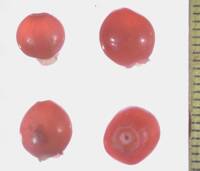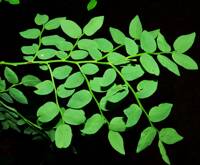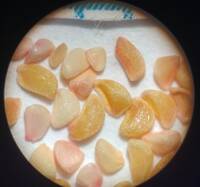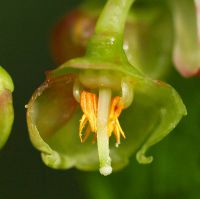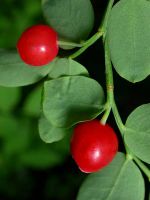Distribution: Occurring chiefly west of the Cascades crest in Washington; Alaska to California.
Habitat: Moist woods, forest edges and openings, from sea level to middle elevations in the mountains.
Flowers: April-June
Origin: Native
Growth Duration: Perennial
Conservation Status: Not of concern
Pollination: Bumblebees, bees
Erect shrub 1-4 m. tall, the branches green, very prominently angled, usually glabrous.
Leaves tardily deciduous, often a few persistent, thin, oval to oblong-elliptic, rounded, 1-2.5 cm. long, usually glabrous and entire.
Flowers solitary in the axils of the lowest leaves of the youngest shoots, short-petiolate; corolla entire, pale, waxy, yellowish-pink, broadly urn-shaped, about 4 mm. long; anthers with prominent, spreading-erect awns and short, apical pore-bearing tubes; ovary inferior.
Fruit a bright red berry, globose, 6-9 mm. broad.
Publication: Cycl. 36: Vaccinium no. 3. 1817.
PNW Herbaria: Specimen records of Vaccinium parvifolium in the Consortium of Pacific Northwest Herbaria database
WA Flora Checklist: Vaccinium parvifolium checklist entry
OregonFlora: Vaccinium parvifolium information
E-Flora BC: Vaccinium parvifolium atlas page
CalPhotos: Vaccinium parvifolium photos





